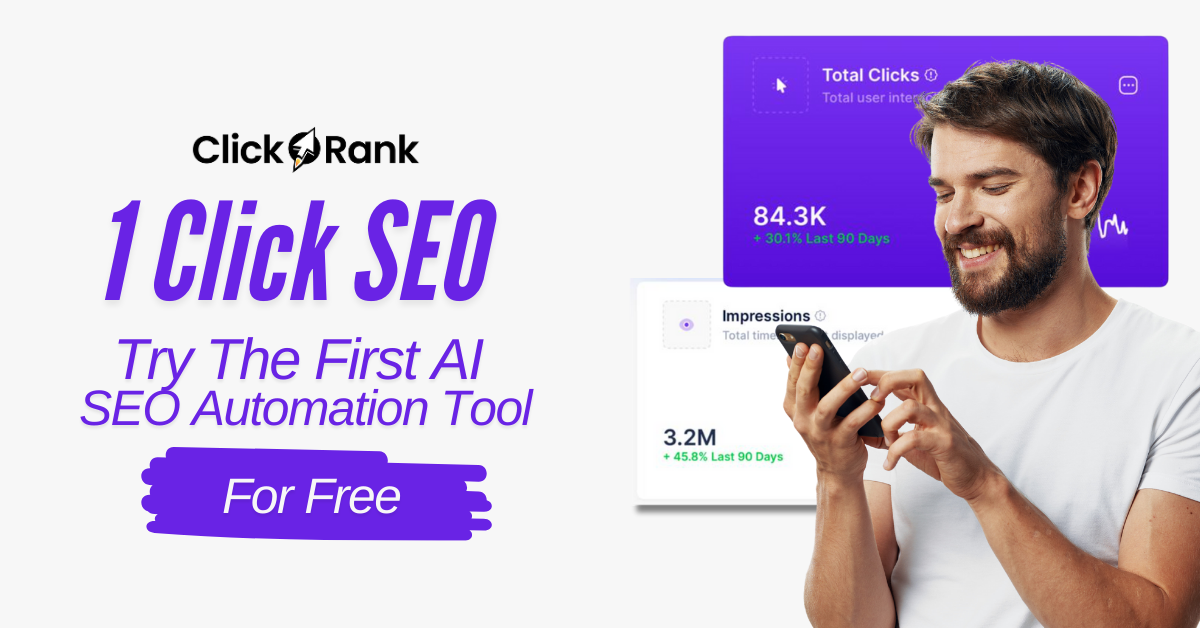You ever try searching for ‘[something] near me’ while pacing in your socks late at night, only to land on a sushi spot in Echo Park you’d never heard of? That’s no accident. (Fun fact: I once found the best taco truck this way and now swear by algorithmic fate.) Today, I’m sharing the not-so-secret sauce neighborhood businesses use to catapult themselves up ‘near me’ searches. No boring theory—just caffeine-fueled experiments, quick wins, and slightly embarrassing stories about overshooting Google Maps directions.
Why ‘Near Me’ Searches Are Your Golden Ticket (Even If Your Grandma Still Uses the Yellow Pages)
From Yellow Pages to Hyper-Local Marketing: The Evolution of Neighborhood Search
Remember the days when your grandma would flip through the Yellow Pages to find a plumber or a hair salon? Fast forward to today, and most of us just grab our phones and type “near me.” This shift isn’t just about convenience—it’s about trust, community, and real connections. In fact, near me searches have become the new front door for local businesses, replacing those thick yellow books with instant, location-based results.
Why People Trust ‘Near Me’ Results More Than Ads
Let’s face it: ads can feel pushy or impersonal. But when you search for “Echo Park sushi near me” or “Van Nuys barbers near me,” you’re not just looking for any business—you want someone who’s part of your neighborhood. There’s a reason for that:
- Local feels real: When a business pops up in a neighborhood search, it feels like it’s part of your daily life—not a faceless brand.
- Trust through proximity: Studies show consumers are far more likely to trust and choose businesses that appear in local search results than those found through generic ads.
- Word of mouth, amplified: Local search is the digital version of your neighbor’s recommendation. You see reviews, photos, and even friends who’ve checked in.
‘Local search is where intent meets proximity—it’s what brings strangers through your front door.’ — Rand Fishkin
Real Story: How a Sherman Oaks Salon Filled Their Chairs with ‘Near Me’ Searches
Take the example of a small salon in Sherman Oaks. For years, they relied on flyers and word of mouth. But when they started optimizing for hyper-local marketing—updating their Google Business Profile, collecting reviews from local clients, and adding “Sherman Oaks salon near me” to their website—they saw a transformation. Suddenly, their chairs were booked solid, not just by regulars, but by new faces who found them through a simple “salon near me” search on their phones.
This isn’t just luck. It’s the power of showing up exactly where your neighbors are looking. When you rank in neighborhood searches, you’re not just another business—you’re the go-to spot for locals.
How Google Judges You by Your Community
So, how does Google decide which businesses to show in those coveted near me searches? Here’s a quick breakdown:
- Relevance: Google scans your website, business profile, and even your reviews to see if you match what people are searching for. If you’re a sushi spot in Echo Park, make sure your site and listings say so—loud and clear.
- Proximity: Google uses the searcher’s location (thanks, GPS!) and matches it with businesses nearby. The closer you are, the higher you show up.
- Prominence: This is where your community comes in. Google looks at how well-known you are in your area—think reviews, local links, and even mentions in neighborhood blogs or news.
In short, Google is judging you by your community footprint. The more you show up in local conversations—online and offline—the more likely you are to dominate local search results.
Neighborhood Search: The Emotional Connection
There’s something special about finding a business that’s just around the corner. It’s not just about convenience—it’s about belonging. When someone searches “Van Nuys barbers near me” or “Echo Park sushi near me,” they’re looking for a place that feels like home. That emotional connection is what turns a one-time visitor into a loyal customer.
- Trust: Local businesses feel more accountable—they’re part of your world.
- Convenience: No long drives or confusing directions. You’re just a few blocks away.
- Word of mouth: Happy customers become your best marketers, both online and in person.
Quick Wins for Local Search Dominance
- Claim and optimize your Google Business Profile with accurate info and local keywords.
- Encourage happy customers to leave reviews mentioning your neighborhood.
- Add neighborhood names to your website titles, descriptions, and content.
- Get listed in local directories and collaborate with other neighborhood businesses.
Mastering near me searches isn’t just a tech trick—it’s your golden ticket to becoming the heartbeat of your community, even if your grandma still swears by the Yellow Pages.

Google Maps Visibility: The Not-So-Obvious Paths (and One Time I Sent People to an Abandoned Lot)
If you want to dominate “near me” searches, you need more than just a pin on the map. Google Maps ranking is all about standing out in a sea of sameness—and sometimes, that means getting a little weird (in a good way). Let’s dive into the not-so-obvious ways to boost your small business visibility, with a few hard-learned lessons along the way.
Crafting an Irresistible Google Business Profile
Your Google Business Profile is your digital storefront. But here’s the secret: Google’s algorithm loves authenticity. So do your customers. If your photos look like stock images, or your responses sound like a robot, you’re missing out.
- Photos that Actually Look Like Your Business: Snap real, unfiltered shots of your space, your team, and your products. Show the quirky mural in your lobby or the neon sign out front. People want to know what to expect when they walk in.
- Responses That Sound Like a Real Person: When someone leaves a review—good or bad—reply like you’re talking to a neighbor. Use their name, thank them, and if there’s an issue, offer a solution. Google notices engagement, and so do future customers.
‘People remember how you made them feel, even if they found you on a map.’ — Ann Handley
Small Tweaks, Big Wins: Local Slang, Emojis, and Community Flavor
Here’s an unconventional tip: sprinkle your listing with local SEO flavor. Google’s bots are smart, but they’re also looking for signals that you’re truly part of the neighborhood.
- Use Local Slang: If you’re in Echo Park, mention the “lake” or the “Lotus Festival.” In Van Nuys? Drop a reference to the “Sepulveda hustle.” These tiny touches help Google (and people) see you as a local staple.
- Emojis and Playful Updates: Don’t be afraid to add a taco 🌮 emoji if you’re a Mexican spot, or a pair of scissors ✂️ for your salon. It grabs attention and makes your listing pop in a crowded list.
- Community Stories: Share quick updates about neighborhood events, local heroes, or even the weather. Google loves fresh content, and so do your neighbors.
Wild Card: When a Community Cat Became an SEO Star
Here’s a true story: My buddy runs a bakery in Sherman Oaks. One day, he posted a photo of “Muffin,” the stray cat who naps in the sun outside his shop. He tagged it, “Muffin’s favorite spot on Ventura Blvd.” Suddenly, his Google Maps listing started getting more clicks. People stopped by just to see the cat. Google’s algorithm picked up on the surge in engagement—photos, reviews, even questions about Muffin—and bumped his business up in the “near me” rankings. Sometimes, the most human moments are the ones that win the algorithm’s heart.
Quick Wins for Google Maps Ranking
- Keep Your Info Fresh: Update hours, add new photos, and post weekly. Google rewards active listings.
- Encourage User-Generated Content: Ask happy customers to upload photos or leave reviews. The more real content, the better your business listing optimization.
- Respond to Every Review: Even a simple “Thank you, hope to see you again!” signals you care.
The Abandoned Lot Incident: A Lesson in Over-Optimization
Confession time: I once got a little too clever with my own listing. I added every possible keyword—“best coffee near me,” “hip cafe in Silver Lake,” “latte art experts”—and set my pin just a little closer to the main street for extra visibility. The result? Google started sending people to an empty lot next door. Not only did I lose trust with customers, but my ranking tanked until I fixed the address and cleaned up my profile. Lesson learned: authenticity beats trickery every time.
Google Maps visibility isn’t about gaming the system. It’s about showing up as your real, local self—quirks, emojis, community cats, and all.

Unwritten Rules: Unexpected Ways to Boost Local SEO (Without Turning Into a Robot)
Let’s face it: dominating the ‘near me’ search game isn’t about stuffing your website with keywords or acting like a robot. It’s about living, breathing, and talking like a true local—then letting Google and your neighbors know it. Hyper-local SEO is less about algorithms and more about authenticity. If you want your business to pop up when someone searches for “best tacos near me” or “NoHo dog groomer,” you’ll need to master a few unwritten rules that go beyond the usual playbook.
Leverage Hyper-Local Backlinks: Make Friends, Not Just Links
Here’s a secret: Google cares way more about a link from your neighborhood’s quirky food blogger than a generic online directory. Why? Because authentic, hyper-local backlinks signal to search engines that you’re a real part of the community. So, how do you get them? Start by teaming up with local influencers—think the mural artist with a cult Instagram following or the parent who runs the neighborhood newsletter. Sponsor a block party, host a sidewalk sale, or collaborate on a charity event. But don’t just hand over a check and hope for the best. Ask for a link back to your website in their recap post, event calendar, or social shout-out. These genuine connections are gold for location-based SEO and local business promotion.
Eavesdrop at the Coffee Shop: Speak the Neighborhood’s Language
Ever noticed how locals have their own names for places? Maybe your area is officially “North Hollywood,” but everyone just calls it “NoHo.” Or perhaps “Echo Park” is affectionately known as “the east side.” Google’s algorithms are getting smarter at understanding these nuances, and so should you. Listen in at coffee shops, scan local Facebook groups, and pay attention to how your customers describe the neighborhood. Then, weave that language naturally into your website copy, blog posts, and even your Google Business Profile. This kind of contextual, neighborhood-specific language doesn’t just make your site feel more authentic—it also boosts your relevance in hyper-local searches. As SEO expert Aleyda Solis puts it:
‘Master local SEO by living like a regular in your own neighborhood—then write about it.’ — Aleyda Solis
Why Google Is Obsessed with Your Hours (and What Happens If You Mess Up)
Here’s a side tangent that’s more important than you might think: your hours of operation. Google wants to send searchers to businesses that are actually open. If your hours are wrong—or worse, if you close early during a big event like a food festival—Google (and your customers) will notice. This can tank your trustworthiness and your rankings. Keep your hours up to date everywhere: your website, Google Business Profile, Yelp, and any local directories. If you’re hosting a special event or extending hours for a festival, update your info in advance. Even small tweaks like “open late for First Fridays” or “closed for block party” can help you stay visible and trustworthy in local searches.
Practical Tweaks for Hyper-Local Visibility
Don’t underestimate the power of micro-events and neighborhood specials. Offering a “NoHo Neighbor Discount” or a “Sherman Oaks Summer Happy Hour” gives you a reason to update your site and social profiles with fresh, hyper-local content. These details not only attract locals but also signal to Google that you’re active and relevant in your neighborhood. The more you reflect what’s actually happening in your community, the more likely you are to show up in those coveted ‘near me’ searches.
Conclusion: Be a Local, Not a Robot
At the end of the day, the best way to crack the ‘near me’ code is to act like you belong—because you do. Build real relationships with local creators, speak your neighborhood’s language, and keep your business details as fresh as your morning coffee. Hyper-local SEO isn’t about tricking search engines; it’s about proving you’re a genuine, active part of your community. So, step out from behind the screen, get involved, and let your online presence reflect the real you. That’s how you’ll own your local search—and maybe even become the go-to spot everyone’s searching for.
TL;DR: If you want your business to show up in every ‘near me’ search in your community, experiment boldly, optimize creatively, and don’t forget to stand out online and on the map—quirks and all.
You may be interested

